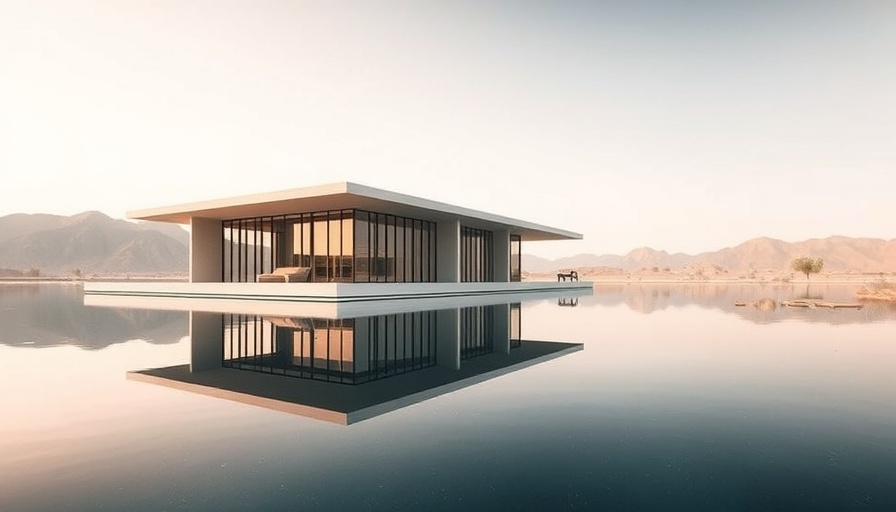
Desert X 2025: An Artistic Exploration of Coachella Valley's Rich Heritage
The Desert X 2025 exhibition is more than just a showcase of art; it's a vibrant conversation between people and the captivating California desert. This year's exhibition, curated by Neville Wakefield and Kaitlin Garcia-Maestas, features eleven innovative installations from international artists that engage with the landscape and explore themes of displacement, sovereignty, and adaptation. The installations serve as both a tribute to the Coachella Valley's history and a platform for discussing contemporary issues shaped by the land's evolution.
A 3D Printed Oasis: Ronald Rael's Vision
Among the standout installations, architect Ronald Rael's "Adobe Oasis" is an embodiment of both tradition and modern technology. This installation uses a large robotic arm to 3D-print adobe structures, creating a textured, inviting space that bends around a living palm tree. Rael's work juxtaposes Indigenous building techniques with contemporary manufacturing to highlight a sustainable alternative to exploitative real estate development. It not only celebrates the unique architecture of the valley but also resonates with the urgent need for climate-conscious design.
Living Across Borders: Jose Dávila's Comment on Cultural Identity
Jose Dávila's installation, "The Act of Being Together," involves transporting unaltered marble blocks across the U.S.-Mexico border. This piece symbolizes the intersection of identity and physical space. By presenting raw materials from one land in another, Dávila invites viewers to contemplate the narratives of presence and absence ingrained in the valley’s geography and the broader implications of borderlands and migration.
The Evolving Landscape: Nature as an Artwork
Not to be missed, Agnes Denes’ "Living Pyramid" takes the concept of art into the realm of environmental sustainability. This piece, planted with native vegetation, is designed to change over time, evolving with the cycles of nature and reinforcing the connection between art and ecology. It serves as a reminder of the desert’s resilience and the need for conscious stewardship of its resources.
Interactive Engagement: Art Meets Technology
Another fascinating installation is Sarah Meyohas' "Truth Arrives in Slanted Beams," which uses cutting-edge light-manipulating technology to create mesmerizing patterns on the desert floor. This project combines elements of art and science, drawing connections between ancient timekeeping devices and contemporary artistic practices. Visitors can interact with the installation, adjusting mirrors to explore visual phenomena that evoke illusions of water, embodying the desert’s natural moisture-rich allure.
The Broader Cultural Dialogue
Desert X 2025 reflects a tapestry of narratives interwoven in the Coachella Valley landscape. From discussing the impact of historical displacements through Sanford Biggers’ "Unsui (Mirror)" to capturing the essence of community healing in Alison Saar’s "Soul Service Station," the exhibition prompts essential conversations on identity, belonging, and our relationship with the environment.
Tips for Visiting the Exhibition
For digital nomads and art enthusiasts alike, experiencing Desert X is both enlightening and engaging. Visitors are encouraged to download the Desert X app for easy navigation through installations, along with recommendations for public programs and volunteer-led tours. The exhibition runs from March 11 to May 11, 2025, providing ample opportunity to explore the interactions between art, nature, and culture.
As you traverse the Coachella Valley, take a moment to feel the desert's whispers in the installations, connect with the artists’ messages, and appreciate the rich history embedded in the landscape. Understanding the significance of these works not only enhances your appreciation but also encourages deeper reflections on sustainability, collaboration, and legacy.
Ready to embark on your artistic adventure? Make the Coachella Valley your destination this spring and witness the dialogues that Desert X 2025 ignites!
 Add Row
Add Row  Add
Add 




Write A Comment